
Climbing Mount Improbable
by
Richard Dawkins
and
Lalla Ward
Published 1 Jan 1996
CLIMBING MOUNT IMPROBABLE By the Same Author THE SELFISH GENE THE EXTENDED PHENOTYPE THE BLIND WATCHMAKER RIVER OUT OF EDEN Original drawings by Lalla Ward CLIMBING MOUNT IMPROBABLE Richard Dawkins W. W. Norton & Company New York London Copyright © 1996 by Richard Dawkins Original drawings copyright © 1996 by Lalla Ward All rights reserved First published as a Norton 1997 Library of Congress Cataloging-in-Publication Data Dawkins, Richard, 1941— Climbing mount improbable / Richard Dawkins; original drawings by Lalla Ward. p. cm. Includes bibliographical references.
…
You can, if you wish, think of the genes in all the populations of the world as constituting a giant computer, calculating costs and benefits and currency conversions, with the shifting patterns of gene frequencies doing duty for the shuttling Is and 0s of an electronic data processor. It is quite an illuminating insight to which we’ll return in the closing pages of this book. But now it is time to illuminate the title. What is Mount Improbable and what shall we learn from it? CHAPTER 3 THE MESSAGE FROM THE MOUNTAIN MOUNT IMPROBABLE REARS UP FROM THE PLAIN, LOFTING its peaks dizzily to the rarefied sky. The towering, vertical cliffs of Mount Improbable can never, it seems, be climbed. Dwarfed like insects, thwarted mountaineers crawl and scrabble along the foot, gazing hopelessly at the sheer, unattainable heights. They shake their tiny, baffled heads and declare the brooding summit forever unscalable.
…
After Michael Land had kindly read and criticized the first draft of this chapter, I invited him to attempt a visual representation of the eye region of Mount Improbable and Figure 5.30 shows what he drew. It is in the nature of metaphors that they are good for some purposes but not others and we must be prepared to modify them, or even drop them altogether, when necessary. This is not the first occasion when the reader will have noticed that Mount Improbable, for all that it has a singular name like the Jungfrau, is actually a more complicated, multiple-peaked affair. Figure 5.30 The eye region of the Mount Improbable range: Michael Land’s landscape of eye evolution. That other great authority on animal eyes, Dan Nilsson, who also read the chapter in draft, summed up the central message by calling my attention to what may be the most bizarre example of the ad hoc and opportunistic evolution of an eye.
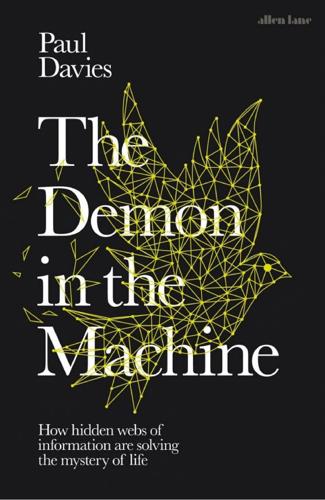
The Demon in the Machine: How Hidden Webs of Information Are Finally Solving the Mystery of Life
by
Paul Davies
Published 31 Jan 2019
In fact, we don’t know the answer to an even more basic question: was the ascent from non-life to life a long, gently sloping, seamless upward track from inanimate matter to biology, or did it feature a series of abrupt major transformations, akin to what in physics are called phase transitions (such as the jump from water to steam)? Nobody knows. In either case, however, the metaphor of a prebiotic Mount Improbable is useful, with the height up the mountain a measure of chemical complexity. Returning to the hypothetical life meter to be sent to Titan, if it existed, it could be regarded as a sort of complexity altimeter that would measure how far up the prebiotic Mount Improbable Titan’s atmosphere had climbed. Clearly something is missing in an account that focuses on chemical complexity alone. A recently deceased mouse is chemically as complex as a living mouse, but we wouldn’t think of it as being, say, 99.9 per cent alive.
…
Furthermore, if terrestrial life is the product of a universe that embeds some form of life principle in its basic laws, then the place of human beings in the great cosmic scheme would be profoundly different than if we were the products of a freak chemical accident. As I have mentioned, a basic unknown about the pathway from non-life to life is whether it was a long, steady slog up a pre-biotic version of Mount Improbable, or whether it took place in fits and starts, with long periods of stasis interrupted by great leaps forward (or upward, in this metaphor). Given that Mount Improbable is so incredibly high, it won’t do for a chemical mixture to attain a toehold in the foothills only to slide back down again. There has to be some sort of ratcheting effect to lock in the gains and limit the losses while the system hangs out for the next step.
…
These statements sound ridiculous. But why? Of course, we do not possess a life meter. More to the point, it is very unclear how such a device would even work in principle. What exactly would it measure? Richard Dawkins introduced an engaging metaphor to illustrate the process of biological evolution, called Mount Improbable.5 Complex life is a priori exceedingly unlikely. It exists only because, starting with very simple microbial organisms, evolution by natural selection has incrementally fashioned it over immense periods of time. In the metaphor, the ancestors of today’s complex life forms (such as humans) can be envisaged as climbing higher and higher up the mountain (in the complexity sense) over billions of years.

The God Delusion
by
Richard Dawkins
Published 12 Sep 2006
Unlike the flatworm eye, which can detect light and shade but see no image, the Nautilus ‘pinhole camera’ eye makes a real image; but it is a blurred and dim image compared to ours. It would be spurious precision to put numbers on the improvement, but nobody could sanely deny that these invertebrate eyes, and many others, are all better than no eye at all, and all lie on a continuous and shallow slope up Mount Improbable, with our eyes near a peak – not the highest peak but a high one. In Climbing Mount Improbable, I devoted a whole chapter each to the eye and the wing, demonstrating how easy it was for them to evolve by slow (or even, maybe, not all that slow) gradual degrees, and I will leave the subject here. So, we have seen that eyes and wings are certainly not irreducibly complex; but what is more interesting than these particular examples is the general lesson we should draw.
…
If its merciless rationalism doesn’t enrage you at some point, you probably aren’t alive.” —Julian Barnes, author of Arthur and George “A magnificent book, lucid and wise, truly magisterial.” —Ian McEwan, author of Atonement Books by Richard Dawkins THE SELFISH GENE THE EXTENDED PHENOTYPE THE BLIND WATCHMAKER RIVER OUT OF EDEN CLIMBING MOUNT IMPROBABLE UNWEAVING THE RAINBOW A DEVIL’S CHAPLAIN THE ANCESTOR’S TALE THE GOD DELUSION Richard Dawkins THE GOD DELUSION A MARINER BOOK HOUGHTON MIFFLIN COMPANY Boston • New York Copyright © 2006 by Richard Dawkins Preface © 2008 by Richard Dawkins ALL RIGHTS RESERVED First published in Great Britain by Bantam Press, a division of Transworld Publishers, 2006 For information about permission to reproduce selections from this book, write to Permissions, Houghton Mifflin Company, 215 Park Avenue South, New York, New York 10003.
…
It is these end products that form the subjects of the creationist’s wearisomely recycled argument. The creationist completely misses the point, because he (women should for once not mind being excluded by the pronoun) insists on treating the genesis of statistical improbability as a single, one-off event. He doesn’t understand the power of accumulation. In Climbing Mount Improbable, I expressed the point in a parable. One side of the mountain is a sheer cliff, impossible to climb, but on the other side is a gentle slope to the summit. On the summit sits a complex device such as an eye or a bacterial flagellar motor. The absurd notion that such complexity could spontaneously self-assemble is symbolized by leaping from the foot of the cliff to the top in one bound.

The Greatest Show on Earth: The Evidence for Evolution
by
Richard Dawkins
Published 21 Sep 2009
It systematically seizes the minority of random changes that have what it takes to survive, and accumulates them, step by tiny step over unimaginable timescales, until evolution eventually climbs mountains of improbability and diversity, peaks whose height and range seem to know no limit, the metaphorical mountain that I have called ‘Mount Improbable’. The improbability pump of natural selection, driving living complexity up ‘Mount Improbable’, is a kind of statistical equivalent of the sun’s energy raising water to the top of a conventional mountain.* Life evolves greater complexity only because natural selection drives it locally away from the statistically probable towards the improbable.
…
Also by Richard Dawkins The Selfish Gene The Extended Phenotype The Blind Watchmaker River Out of Eden Climbing Mount Improbable Unweaving the Rainbow A Devil’s Chaplain The Ancestor’s Tale The God Delusion THE GREATEST SHOW ON EARTH THE EVIDENCE FOR EVOLUTION RICHARD DAWKINS For Josh Timonen FREE PRESS A Division of Simon & Schuster, Inc. 1230 Avenue of the Americas New York, NY 10020 Copyright © 2009 by Richard Dawkins Originally published in Great Britain in 2009 by Bantam Press an imprint of Transworld Publishers All rights reserved, including the right to reproduce this book or portions thereof in any form whatsoever.
…
The Selfish Gene and The Extended Phenotype offered an unfamiliar vision of the familiar theory of natural selection, but they didn’t discuss the evidence for evolution itself. My next three books, in their different ways, sought to identify, and dissolve, the main barriers to understanding. These books, The Blind Watchmaker, River Out of Eden and (my favourite of the three) Climbing Mount Improbable, answered questions like, ‘What is the use of half an eye?’ ‘What is the use of half a wing?’ ‘How can natural selection work, given that most mutations have negative effects?’ Once again, however, these three books, although they cleared away stumbling blocks, did not present the actual evidence that evolution is a fact.
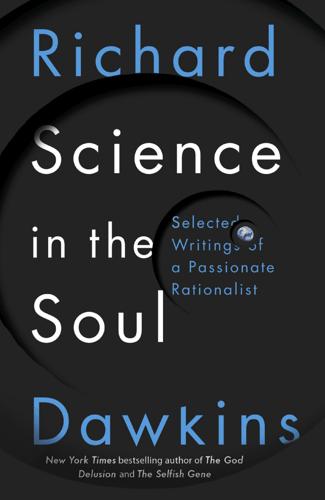
Science in the Soul: Selected Writings of a Passionate Rationalist
by
Richard Dawkins
Published 15 Mar 2017
A ‘scan’ of the parent’s body would faithfully reproduce every scar, broken limb and missing foreskin, along with ‘good’ acquisitions such as toughened soles and learned wisdom. Once again there would be a need for a selective choice of ‘good’ acquisitions versus scars and the like. And what could the ‘selector’ be but some version of what Darwin proposed? *9 I later used the metaphor of Climbing Mount Improbable in the book of that name. A complex piece of well-designed machinery such as an eye sits high on a peak of Mount Improbable. One side of the mountain is a sheer precipice, impossible to scale in a single leap – saltation. But on the other side of the mountain is a gentle slope, easy to climb simply by placing one foot in front of the other. *10 Punctuated equilibrium, which briefly became familiar enough to be affectionately abbreviated to ‘punk eek’, was a theory advanced by the distinguished paleontologists Niles Eldredge and Stephen Jay Gould to account for apparent jumpiness of the fossil record.
…
It is hard to see that it falls foul of dispassionate utilitarian reasoning, provided we could be sure the selective breeding genuinely changed the animal’s perception of pain, rather than – horrifying thought – changing its method of responding to pain while leaving the perception of pain intact. *29 It is in this spirit that I chose ‘The fortyfold path to enlightenment’ as my title for the chapter on the evolution of the eye in Climbing Mount Improbable. A whole chapter was necessary because, from William Paley on, the eye has been such a favourite of creationists seeking to apply what I called ‘the Argument from Personal Incredulity’. Even Darwin confessed that the evolution of the eye seemed at first blush implausible. But his confession was a temporary rhetorical ploy, for he went on to show how easy it is to explain its gradual evolution.
…
Stephen Gould himself was present at my Cambridge lecture. After it, he jumped up and mentioned saltationism as one of several historical alternatives to Darwinian selection. Did he really not understand the impossibility of explaining the complex illusion of design by saltation – leaping from the bottom to the top of Mount Improbable in a single bound? It seems hard to credit. Gould was deeply interested in, and knowledgeable about, history. He was historically correct in asserting that some scientists in the early twentieth century had espoused saltationism as (what they thought was) an alternative to gradualism. But he was scientifically – even logically – incorrect to say that saltationism could ever be a viable alternative to gradualism as an explanation for complex adaptation.
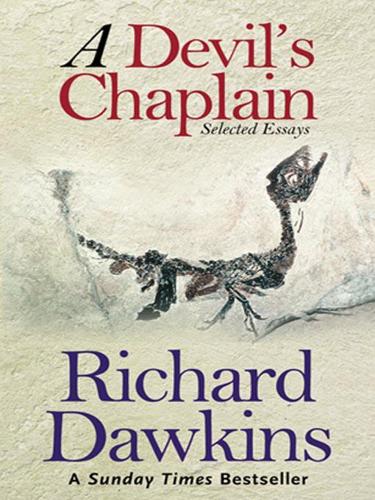
A Devil's Chaplain: Selected Writings
by
Richard Dawkins
Published 1 Jan 2004
Formerly Executive Editor of Microsoft Encarta Encyclopedia,World English Edition, her interests lie in the conceptual mapping of knowledge and the thoughtful dissemination of learning. By Richard Dawkins The Selfish Gene The Extended Phenotype The Blind Watchmaker River Out of Eden Climbing Mount Improbable Unweaving the Rainbow A Devil’s Chaplain The Ancestor’s Tale The God Delusion The Greatest Show on Earth A Devil’s Chaplain Selected Essays by Richard Dawkins Edited by Latha Menon For Juliet on her Eighteenth Birthday CONTENTS Cover Title Dedication Praise About the Author Also by Richard Dawkins Author’s Note Editor’s Introduction 1 Science and Sensibility 1.1 A Devil’s Chaplain 1.2 What is True?
…
But the fact that nobody did think of natural selection before the nineteenth century clearly shows that I am wrong. As does the fact that so many people, even today, don’t get it. 4I find this image, which is modified from the venerable American population geneticist Sewall Wright, a helpful way to think about evolution. I first made use of it in The Blind Watchmaker and gave it two chapters in Climbing Mount Improbable, where I called it a ‘museum’ of all possible animals. Museum is superficially better than landscape because it is three-dimensional, although actually, of course, we are usually dealing with many more than three dimensions. Daniel Dennett’s version, in Darwin’s Dangerous Idea, is a library, the vividly named ‘Library of Mendel’. 5Chaos here has its original and still colloquial meaning, not the technical meaning which it has recently acquired. 6About life’s functional complexity or high ‘information content’. 7He used the analogy of perfecting the focus of a microscope.
…
‘And even the ranks of Tuscany’ (Steve would have completed the quotation from his formidable literary memory) ‘Could scarce forebear to cheer’. Macaulay107 celebrated the admiration that can unite enemies in death. Enemies is too strong a word for a purely academic dispute, but admiration is not, and we were shoulder to shoulder on so much. In his review of my own Climbing Mount Improbable, Steve invoked a collegiality between us, which I reciprocated, in the face of a shared enemy:108 In this important uphill battle for informing a hesitant (if not outrightly hostile) public about the claims of Darwinian evolution, and for explaining both the beauty and power of this revolutionary view of life, I feel collegially entwined with Richard Dawkins in a common enterprise.
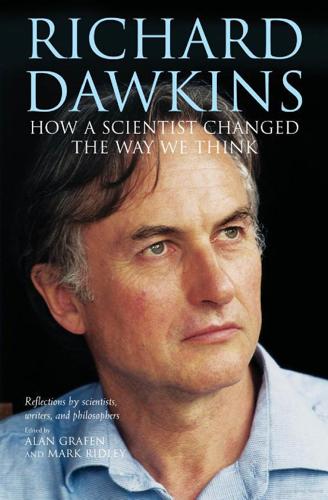
Richard Dawkins: How a Scientist Changed the Way We Think
by
Alan Grafen; Mark Ridley
Published 1 Jan 2006
The Selfish Gene is now well established as a classic exposition of evolutionary ideas for academic and lay readers alike. Its author, propelled to fame, went on to display the range and depth of his analytical skills and literary abilities in a string of best-sellers: The Extended Phenotype (intended primarily for fellow biologists), The Blind Watchmaker, River Out of Eden, Climbing Mount Improbable, Unweaving the Rainbow, and The Ancestor’s Tale. A collection of his essays was published as A Devil’s Chaplain. Increasingly involved in public debate on science and rationalism, Dawkins has become a familiar figure in the media, and a leading champion of atheism. To find professional scientists with a similar public profile on non-scientific issues, one has to return to the days of J.
…
When I first read Dawkins I was immediately gripped by concerns in his writings on life that were richer versions of ones that guided my thinking on the mind. The parallels concerned both the content and the practice of the relevant sciences. The first critical theme is an attention to adaptive complexity as the paramount phenomenon in need of an explanation, most forcibly expressed in The Blind Watchmaker and Climbing Mount Improbable. In the case of life, we have the remarkable adaptations of living things: echolocation, camouflage, the vertebrate eye, and countless other ‘organs of extreme perfection and complication’, in Darwin’s words, which represent solutions to formidable engineering problems. In the case of mind, we have the remarkable powers of human cognition: the ability to recognize objects and materials, plan and execute movement, reason and remember, speak and understand.
…
It may well be that after, say, the invention of multicellularity, or the invention of metamerism, evolution was never the same again. In this sense, there may be a one-way ratchet of progressive innovation in evolution.22 Dawkins has always made brilliant use of metaphor—selfish gene, blind watchmaker, mount improbable—and metaphor is much involved in the thinking about progress. In The Blind Watchmaker, the metaphor of bigger and bigger on-board computers (aka brains) plays a vital role, as it has elsewhere. Computer evolution in human technology is enormously rapid and unmistakably progressive. It comes about through at least partly a kind of hardware/software coevolution.

The Portable Atheist: Essential Readings for the Nonbeliever
by
Christopher Hitchens
Published 14 Jun 2007
Unlike the flatworm eye, which can detect light and shade but see no image, the Nautilus ‘“pinhole camera” eye makes a real image; but it is a blurred and dim image compared to ours. It would be spurious precision to put numbers on the improvement, but nobody could sanely deny that these invertebrate eyes, and many others, are all better than no eye at all, and all lie on a continuous and shallow slope up Mount Improbable, with our eyes near a peak—not the highest peak but a high one. In Climbing Mount Improbable, I devoted a whole chapter each to the eye and the wing, demonstrating how easy it was for them to evolve by slow (or even, maybe, not all that slow) gradual degrees, and I will leave the subject here. So, we have seen that eyes and wings are certainly not irreducibly complex; but what is more interesting than these particular examples is the general lesson we should draw.
…
In a time of expanding and indeed exploding knowledge of biology, Richard Dawkins has educated a generation of people in the intricacies and wonders (far more impressive than anything supernatural) of our species and of others. It will be a long time before his books—The Selfish Gene, The Blind Watchmaker, and Climbing Mount Improbable among many others—are superseded as works of explication and indeed innovation in their field. Professor Dawkins reminds us that evolution by natural selection is indeed “only a theory”: the most successful and the most testable theory in human history. He further reminds us that there are competing explanations for how this theory operates in practice.
…
It is these end products that form the subjects of the creationist’s wearisomely recycled argument. The creationist completely misses the point, because he (women should for once not mind being excluded by the pronoun) insists on treating the genesis of statistical improbability as a single, one-off event. He doesn’t understand the power of accumulation. In Climbing Mount Improbable, I expressed the point in a parable. One side of the mountain is a sheer cliff, impossible to climb, but on the other side is a gentle slope to the summit. On the summit sits a complex device such as an eye or a bacterial flagellar motor. The absurd notion that such complexity could spontaneously self-assemble is symbolized by leaping from the foot of the cliff to the top in one bound.

Unweaving the Rainbow
by
Richard Dawkins
Published 7 Aug 2011
'Tell me Mr Eliot, how exactly does one measure out one's life with coffee spoons?' would not, to say the least, have been a good conversation opener, but a scientist, rightly, expects to be asked equivalent questions. 'In what sense can a gene be selfish?' 'What exactly flows down the River Out of Eden?' I still spell out on demand the meaning of Mount Improbable and how slowly and gradually it is climbed. Our language must strive to enlighten and explain, and if we fail to convey our meaning by one approach we should go to work on another. But, without losing lucidity, indeed with added lucidity, we need to reclaim for real science that style of awed wonder that moved mystics like Blake.
…
A mutation of small effect, or micromutation, is a small error in gene copying, whose effect on its possessors might be too slight to notice easily, say a subtle lengthening of a leg bone, or a hint of reddening in a feather. A macromutation is a dramatic error, a change so large that, in extreme cases, its possessor would be classified in a different species from its parents. In my previous book, Climbing Mount Improbable, I reproduced a photograph from a newspaper of a toad with eyes in the roof of its mouth. If this photograph is genuine (a big if, in these days of Photoshop and other handy image-manipulation software), and if the error is genetic, the toad is a macromutant. If such a macromutant spawned a new species of toads with eyes in the roofs of their mouths, we should describe the abrupt evolutionary origin of the new species as a saltation or evolutionary jump.
…
We may think this spreading for the sake of spreading rather futile, but nature is not interested in our judgements, of futility or of anything else. If a piece of code has what it takes, it spreads and that's that. Genes can also spread for what we think of as a more 'legitimate' reason, say, because they improve the acuity of a hawk's eyesight. They are the ones that first occur to us when we think of Darwinism. In Climbing Mount Improbable I explained that an elephant's DNA and a virus's are both 'Copy Me' programmes. The difference is that one of them has an almost fantastically large digression: 'Copy me by building em elephant first.' But both kinds of program spread because, in their different ways, they are good at spreading.

The Ancestor's Tale: A Pilgrimage to the Dawn of Evolution
by
Richard Dawkins
Published 1 Jan 2004
* Stephen Gould compared them in a nice essay called 'Ships That Pass in the Night' * A lugworm, with its grey and muddy mouth Sang that somewhere to north or west or south There dwelt a gay, exulting, gentle race ... -- W. B. Yeats (1865-1939) * I have discussed this at length in Climbing Mount Improbably, in a chapter called 'The Fortyfold Path to Enlightenment', and I return to it at the end of this book. * Following the theoretical idea known as the Baldwin Effect. Superficially, it sounds like Lamarckian evolution and the inheritance of acquired characteristics. Not so. Learning doesn't imprint itself into the genes.
…
It is also that they can be used as a cross-check on each other. It is extremely hard to argue against datings that are corroborated by different methods. * The reason for this little hedge will emerge when we get to Canterbury. * I would have included a tale about this if I had not already done it in two chapters of Climbing Mount Improbable, 'Pollen Grains and Magic Bullets', and 'A Garden Inclosed'. * Apart from the rather insignificant 13 species of single-celled glaucophytes, which seem to be the outgroup. * Buds that have been grotesquely modified in this case by artificial selection under domestication, but the principle still stands
…
We can think of the experiment of evolution being rerun, not from the same starting point in different geographical areas, but from different starting points -- very possibly in the same geographical area: convergence in animals so unrelated to each other that what they tell us has nothing to do with geographical separation. It has been estimated that 'the eye' has evolved independently between 40 and 60 times around the animal kingdom. This inspired my chapter called 'The Fortyfold Path to Enlightenment' in Climbing Mount Improbable, so I won't repeat myself here, except to say that Professor Michael Land of Sussex University, our leading expert on the comparative zoology of eyes, recognises nine independent principles of optical mechanism, each of which has evolved more than once. He was kind enough to prepare for that book the landscape reprinted below, in which separate peaks represent independent evolutions of eyes.

Startup CEO: A Field Guide to Scaling Up Your Business, + Website
by
Matt Blumberg
Published 13 Aug 2013
The essential point is to realize that every company has a culture, whether it’s a deliberate enactment of the company’s values or an accidental accretion of behaviors and vibes. Don’t let the latter creep up on you. Whatever you do, be deliberate! INTRODUCING FIG WASP 879 I always draw on great business books to become a better CEO, but it was in a book on evolutionary biology, Climbing Mount Improbable by Richard Dawkins, that I found a rich metaphor that is applicable to business in many ways. There are over 900 kinds of fig trees in the world. Who knew? I was dimly aware there was such a thing as a fig tree, although quite frankly I’m most familiar with the fig in its Newton format. Some species reproduce wildly inefficiently—like wild grasses, whose pollen is spread through the air; with a lot of luck, one in a billion (with a “b”) lands in the right place at the right time and propagates.
…
The Entrepreneur’s Guide to Customer Development: A Cheat Sheet to the Four Steps to the Epiphany (CustDev, 2010). Covey, Stephen. The Eighth Habit: From Effectiveness to Greatness (Free Press, 2011). Covey, Stephen. The 7 Habits of Highly Effective People: Powerful Lessons in Personal Change (Simon & Schuster, 2004). Dawkins, Richard. Climbing Mount Improbable (W. W. Norton & Company, 1997). Feld, Brad. Startup Communities: Building an Entrepreneurial Ecosystem in Your City (John Wiley & Sons, 2012). Feld, Brad. Startup Metrics: Making Sense of the Numbers in Your Startup (John Wiley & Sons, 2013). Feld, Brad, and Amy Batchelor. Startup Life: Surviving and Thriving in a Relationship with an Entrepreneur (John Wiley & Sons, 2013).
…
INDEX A Absey, Anita The Advantage: Why Organizational Health Trumps Everything Else in Business (Lencioni) Alignment, driving aligning individual incentives with global goals five keys to “Analog analogue” B Baer, Josh Baldonero, Angela Benchmarking, value and limitations of Bilbrey, George Blank, Steven Gary Blumberg, Bob Blumberg, Mariquita Board of directors building advisory board compensating feedback process members recruiting structuring as teams compensation and review, working with board on CEO’s compensation CEO’s performance review expenses decision making and firing a CEO making difficult decisions in concert managing conflict meeting materials Board Book value of preparing for meetings, effective executive and closed sessions forward-looking agenda, building in-meeting materials protocol scheduling staff/board interactions non–board meeting time ad hoc meetings premeetings social outings serving on other boards basics of substance vs. style value of reasons for having Bootstrapping company’s cash flow customer financing Bottom-up approach “Broken Windows” theory Business pivots (changes in substance) C “Can You Say What Your Strategy Is?” (Collis & Rukstad) Catcher Hypothesis CEO communication, cheat sheet for firing as functional supervisor rules for general managers performance review role in execution Cleveland Airport test Climbing Mount Improbable (Dawkins) Coach, working with purpose of value of Colonna, Jerry Company building, critical elements of communication patterns driving force expenses, policies about geography office, type of personal acknowledgment staffing and compensation systems time off, policies about Company culture, crafting company values environment of trust, building fig wasp 879 work-life balance Company operating system, creating modes of operating rhythms Compensation determining, general guidelines for three elements of base pay equity incentive pay pay reductions Competition good and bad playing hardball playing offense vs. playing defense Consolidating Covey, Stephen Coy, Jen D Data, collecting external learning from customers learning from (un)employees internal productive eavesdropping skip-level meetings subbing Debt bank loans convertible debt personal debt venture debt Defining and testing the story admitting you’re wrong lean business plan template channels cost structure and revenue streams customer segments key metrics problem solution unique value proposition and unfair advantage Development plans, sample Dickerson, Chad Difficult business situation, managing in Diversifying Divestiture Drucker, Peter E Economic downturn, managing in Employees.

The Evolution of Everything: How New Ideas Emerge
by
Matt Ridley
Origins of specificity. commonsenseatheism.com. On Beverley’s critique, Beverley, Robert Mackenzie 1867. The Darwinian Theory of the Transmutation of Species. James Nisbet & Co. On pencils, ‘I, Pencil’ is by Leonard Reed (1958) and is easily accessed on the internet. On Mount Improbable, Dawkins, Richard 1996. Climbing Mount Improbable. Norton. On opsins, Feuda, R., Hamilton, S.C., McInerney, J.O. and Pisani, D. 2012. Metazoan opsin evolution reveals a simple route to animal vision. Proceedings of the National Academy of Sciences. On redundancy in metabolic networks, Wagner, Andreas 2014. Arrival of the Fittest.
…
A light-sensitive patch on the skin enables a limpet to tell which way is up; a light-sensitive cup enables a species called a slit-shelled mollusc to tell which direction the light is coming from; a pinhole chamber of light-sensitive cells enables the nautilus to focus a simple image of the world in good light; a simple lensed eye enables a murex snail to form an image even in low light; and an adjustable lens with an iris to control the aperture enables an octopus to perceive the world in glorious detail (the invention of the lens is easily explained, because any transparent tissue in the eye would have acted as partial refractor). Thus even just within the molluscs, every stage of the eye still exists, useful to each owner. How easy then to imagine each stage having existed in the ancestors of the octopus. Richard Dawkins compares the progression through these grades to climbing a mountain (Mount Improbable) and at no point encountering a slope too steep to surmount. Mountains must be climbed from the bottom up. He shows that there are numerous such mountains – different kinds of eyes in different kinds of animal, from the compound eyes of insects to the multiple and peculiar eyes of spiders – each with a distinct range of partially developed stages showing how one can go step by step.
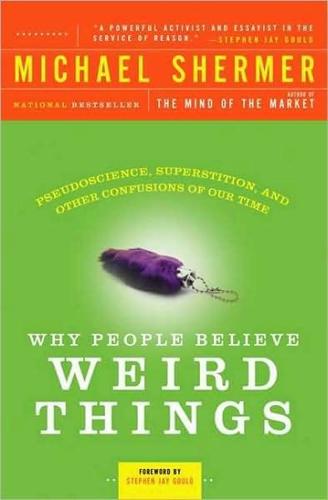
Why People Believe Weird Things: Pseudoscience, Superstition, and Other Confusions of Our Time
by
Michael Shermer
Published 1 Jan 1997
A poorly developed wing may have been a well-developed something else, like a thermoregulator for ectothermic reptiles (who depend on external sources of heat). And it is not true that incipient stages are completely useless. As Richard Dawkins argues in The Blind Watchmaker (1986) and Climbing Mount Improbable (1996), 5 percent vision is significantly better than none and being able to get airborne for any length of time can provide an adaptive advantage. 24. Homologous structures (the wing of a bat, the flipper of a whale, the arm of a human) are proof of intelligent design. By invoking miracles and special providence, the creationist can pick and choose anything in nature as proof of God's work and then ignore the rest.
…
The Mind of God. New York: Simon & Schuster. Dawkins, R. 1976. The Selfish Gene. Oxford: Oxford University Press. ......... 1986. The Blind Watchmaker. New York: Norton. ......... 1995. Darwin's Dangerous Disciple: An Interview with Richard Dawkins. Skeptic 3, no. 4:80-85. ......... 1996. Climbing Mount Improbable. New York: Norton. Dean, J. 1998. Aliens in America: Conspiracy Cultures from Outerspace to Cyberspace. New York: Cornell University Press. Dembski, W. 1998. The Design Inference: Eliminating Chance Through Small Probabilities. Cambridge: Cambridge University Press. Demos, J. P. 1982. Entertaining Satan: Witchcraft and the Culture ofEarly New England.
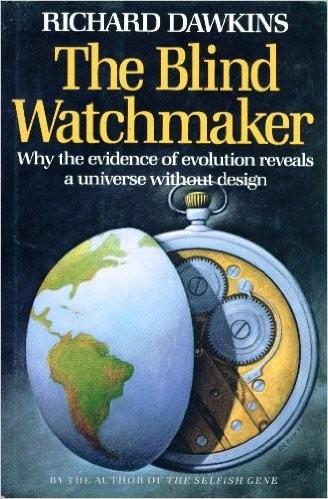
The Blind Watchmaker; Why the Evidence of Evolution Reveals a Universe Without Design
by
Richard Dawkins
Published 1 Jan 1986
Richard Dawkins’s first book, The Selfish Gene (1976; second edition, 1989), became an immediate international bestseller and was translated into all the major languages. Its sequel, The Extended Phenotype, followed in 1982. His other bestsellers include The Blind Watchmaker (1986; Penguin, 1988), River Out of Eden (1995), Climbing Mount Improbable (1996; Penguin, 1997), Unweaving the Rainbow (Penguin, 1999) and The Ancestor’s Tale (2004). Richard Dawkins won both the Royal Society of Literature Award and the Los Angeles Times Literary Prize in 1987 for The Blind Watchmaker. The television film of the book, shown in the Horizon series, won the Sci-Tech Prize for the Best Science Programme of 1987.
…
But, alas, details aside, I can find no major thesis in these chapters that I would withdraw, nothing to justify the satisfying catharsis of a good recant. This does not mean, of course, that there is no more to be said. I could easily fill another ten entirely new chapters on the perennially fascinating topic of evolutionary design. But that would be another book. Now that I think of it, it would be called Climbing Mount Improbable (Penguin, 1996). Although each of the two books is self-sufficient and can be read on its own, it is also true that either could be read as a continuation of the other. The particular subject matter of the two books is different, just as all the chapters of the present book are different from each other, but the underlying theme is the same—Darwinism and design.

The Extended Phenotype: The Long Reach of the Gene
by
Richard Dawkins
Published 1 Jan 1982
Richard Dawkins’s bestselling books have played a significant role in the renaissance of science book publishing for a general audience. The Selfish Gene (1976; second edition 1989) was followed by The Extended Phenotype (1982), The Blind Watchmaker (1986), River Out of Eden (1995), Climbing Mount Improbable (1996), and Unweaving the Rainbow (1998). In 1991 he gave the Royal Institution Christmas Lectures. He has won many literary and scientific awards, including the 1987 Royal Society of Literature Award, the 1990 Michael Faraday Award of the Royal Society, the 1994 Nakayama Prize for Human Science, and the 1997 International Cosmos Prize.
…
In The Evolutionary Biology of Parasitism (eds A. E. Keymer & A. F. Read). Cambridge: Cambridge University Press. Dawkins, R. (1991). Darwin triumphant: Darwinism as a universal truth. In Man and Beast Revisited (eds M. H. Robinson & L. Tiger), pp. 23–39. Washington: Smithsonian Institution. Dawkins, R. (1996). Climbing Mount Improbable. New York: Norton. Dawkins, R. (1998). Unweaving the Rainbow. London: Penguin. Dennett, D. (1995). Darwin’s Dangerous Idea. New York: Simon & Schuster. Depew, D. J. & Weber, B. H. (1996). Darwinism Evolving. Cambridge, Mass.: MIT Press. de Winter, W. (1997). The beanbag genetics controversy: towards a synthesis of opposing views of natural selection.
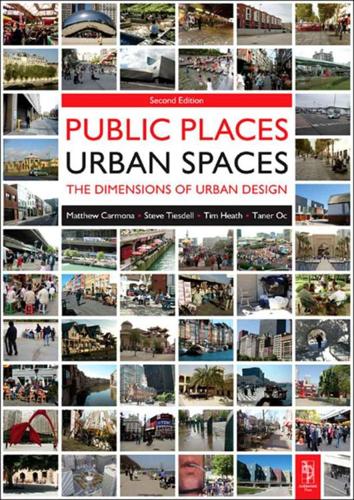
Public Places, Urban Spaces: The Dimensions of Urban Design
by
Matthew Carmona
,
Tim Heath
,
Steve Tiesdell
and
Taner Oc
Published 15 Feb 2010
Similarly, a core message from Rowe & Koetter (1978) was that cities could not be reshaped by a single designer, and, instead, designing cities is more like collage: ‘… inventing a few things, but mostly arranging and reordering elements already at hand.’ (Barnett 2003: 44–5). Small scale, incremental change relates to evolutionary change. Explaining the incremental nature of evolution, Dawkins (1996: 64) uses the parable of climbing Mount Improbable: ‘The towering, vertical cliffs of Mount Improbable can never, it seems, be climbed. … thwarted mountaineers … shake their tiny, baffled heads and declare the brooding summit forever unscalable.’ But, ‘so intent on the perpendicular drama of the cliffs’, the mountaineers do not look around the other side of the mountain, where ‘… they would find not vertical cliffs and echoing canyons but gently inclined meadows, graded steadily and easily towards the distant uplands.’
…
Municipal Engineer, 151, 231–240 Davis, C (1997) Improving Design in the High Street, Architectural Press, Oxford Davis, M (1998) Ecology of Fear: Los Angeles and the Imagination of Disaster, Picador, London Davis, M (1990) City of Quartz: Excavating the Future in Los Angeles, Verso, London Davison I (1995) Viewpoint: Do we need cities any more? Town Planning Review, 66(1) iii-vi Dawkins, R (1996) Climbing Mount Improbable, Viking, London Day, K (1999) Introducing gender to the critique of privatised public space, Journal of Urban Design, 4(2), 155–178 DCLG/DoT (Department for Communities and Local Government/Department for Transport)(2007) Manual for Streets, London, Thomas Telford – available from http://www.dft.gov.uk/pgr/sustainable/manforstreets/ Dear, M (1995) Prolegomena to a postmodern urbanism, In Healey, P; Cameron, S; Davoudi, S; Graham, S; & Mandanipour, A (Editors) Managing Cities: The New Urban Context, John Wiley, Chichester, 27–44 Dear, M & Flusty, S (1999) The postmodern urban condition, in Featherstone, M & Lash, S (1999) (Editors) Spaces of Culture: City-Nation-World, Sage Publications, London, 64–85 Dear, M & Wolch, J (1989) How territory shapes social life, in Wolch, J & Dear, M (editors) The Power of Geography: How Territory Shapes Social Life, Unwin Hyman, Boston Del Cerro Santamaria, G (2007) Bilbao: Basque Pathways to Globalisation, Elsevier, Oxford Denby, E (1956) Oversprawl’, Architectural Review, December, 424–430 Dennis, K & Urry, J (2009), After the Car, Polity Press, Cambridge Denton-Thompson, M (2005) The environmental agenda: A personal view Harvey, S & Fieldhouse, K (Editors) The Cultured Landscape, Designing the Environment in the 21st Century, Routledge, London, 125–146 Department for Communities & Local Government (DCLG) (2006a) Preparing Design Codes: A Practice Manual, DCLG, London Department for Communities & Local Government (DCLG) (2006b) Design Coding in Practice: An Evaluation, DCLG, London Department for Environment, Food & Rural Affairs (DEFRA) (2006) An Environmental Behaviours Strategy for DEFRA, DEFRA, London Department of Environment, Transport & Regions/Commission for Architecture & the Built Environment (DETR/CABE) (2000) By Design: Urban Design in the Planning System: Towards Better Practice, DETR, London Department of Environment, Transport & Regions (DETR) (2000a) Best Value Performance Indicators 2001/2002, DETR, London Department of Environment, Transport & Regions (DETR) (2000b) Survey of Urban Design Skills in Local Government, DETR, London Department of Environment, Transport & Regions (DETR) (1999) Good Practice Guidance on Design in the Planning System, DETR, London Department of Environment, Transport & Regions (DETR) (1998) Places, Streets and Movement: A Companion Guide to Design Bulletin 32 Residential Roads and Footpaths, DETR, London Department of Environment (DoE) (1997) Planning Policy Guidance: General Policy and Principles (PPG1) The Stationary Office, London Department of Environment (DoE) (1996) Analysis of Responses to the Discussion Document ‘Quality in Town and Country’, HMSO, London Department of Environment (DoE) (1994) Quality in Town and Country: A Discussion Document, DoE, London Department of Environment (DoE) (1992) Planning Policy Guidance Note 12: Development Plans and Regional Planning Guidance, HMSO, London Department for Transport (DfT) (2007) Manual for Streets, Thomas Telford Publishing, London Desai, M (2002) Marx's Revenge: The Resurgence of Capitalism and the Death of Statist Socialism, Verso, London Desai, M (2000) Globalisation: Neither ideology nor utopia’, Cambridge Review of International Affairs 14 (1), 16–31 Dickens, P G (1980) Social sciences and design theory Environment & Planning B: Planning & Design, 7, 353–360 Dines, N & Cattell, V (2006) Public Spaces, Social Relations and Well-being in East London, The Policy Press, Bristol Dittmar, H & Ohland, G (2004) (editors) The New Transit Town: Best Practices in Transit-Oriented Development, Island Press, Washington DC Dobbins, M (2009) Urban Design and People, John Wiley & Sons, New Jersey Docherty, I & Shaw, J (2008) Traffic Jam: Ten Years of ‘Sustainable’ Transport in the UK, Policy Press, Bristol Dovey, K (2010) Becoming Places, Urbanism/Architecture/Identity/Power, Routledge, London Duany, A (2001) Three Cheers for Gentrification, American Enterprise, Washington DC Dovey, K (1999) Framing Places: Mediating Power in Built Form, Routledge, London Dovey, K (1990) The Pattern Language and its enemies, Design Studies, 11(1), 3–9 Downs, A (2001) What does “Smart Growth” really mean?

The Magic of Reality: How We Know What's Really True
by
Richard Dawkins
Published 3 Oct 2011
He has created hundreds of album, comic and book covers, and has designed characters for two of the Harry Potter films. He has also directed two feature films, MirrorMask and Luna. Also by Richard Dawkins The Selfish Gene The Extended Phenotype The Blind Watchmaker River Out of Eden Climbing Mount Improbable Unweaving the Rainbow A Devil’s Chaplain The Ancestor’s Tale The God Delusion* The Greatest Show on Earth* * and published by Black Swan TRANSWORLD PUBLISHERS 61–63 Uxbridge Road, London W5 5SA A Random House Group Company www.transworldbooks.co.uk THE MAGIC OF REALITY A BLACK SWAN BOOK: 9780552778053 Version 1.0 Epub ISBN 9781409011415 First Published in Great Britain Black Swan edition published 2012 Copyright © Richard Dawkins 2011 Illustrations copyright © Dave McKean 2011 Richard Dawkins has asserted his right under the Copyright, Designs and Patents Act 1988 to be identified as the author of this work.

Blueprint: The Evolutionary Origins of a Good Society
by
Nicholas A. Christakis
Published 26 Mar 2019
Tursch, “Spiral Growth: The ‘Museum of All Shells’ Revisited,” Journal of Molluscan Studies 63 (1997): 547–554. Tursch also argues that the final shape of a shell is largely determined by its starting conditions, which, being starting conditions, are presumably largely genetically encoded within the organism. 23. R. Dawkins, Climbing Mount Improbable (New York: W. W. Norton, 1996). 24. R. D. K. Thomas and W. E. Reif, “The Skeleton Space: A Finite Set of Organic Designs,” Evolution 47 (1993): 341–360. 25. S. Wolfram, A New Kind of Science (Champaign, IL: Wolfram Media, 2002). 26. G. L. Stebbins, “Natural Selection and the Differentiation of Angiosperm Families,” Evolution 5 (1951): 299–324. 27.
…
Here, the problem is not necessarily that there isn’t enough genetic availability per se, but that most organisms are sitting at the top of “adaptive peaks” (even if those peaks may be suboptimal), and shifts between peaks are less common or very difficult to achieve (and happen only through genetic drift or by traversing “adaptive ridges”). 30. M. LaBarbera, “Why the Wheels Won’t Go,” American Naturalist 121 (1983): 395–408. 31. J. Hsu, “Walking Military Robots Stumble Toward Future,” Discover, December 31, 2015. 32. Dawkins, Climbing Mount Improbable, p. 222. 33. R. I. M. Dunbar, “Neocortex Size as a Constraint on Group Size in Primates,” Journal of Human Evolution 22 (1992): 469–493. 34. J. Henrich, R. Boyd, S. Bowles, C. Camerer, E. Fehr, and H. Gintis, eds., Foundations of Human Sociality: Economic Experiments and Ethnographic Evidence from Fifteen Small-Scale Societies (Oxford: Oxford University Press, 2004). 35.

Mind Wide Open: Your Brain and the Neuroscience of Everyday Life
by
Steven Johnson
Published 2 Jan 1999
Damasio, Antonio. Descartes’ Error: Emotion, Reason, and the Human Brain. New York: HarperCollins, 1994. – -. The Feeling of What Happens. New York: Harcourt, 1999. Darwin, Charles. The Expression of the Emotions in Man and Animals. New York: Oxford University Press, 1998. Dawkins, Richard. Climbing Mount Improbable. New York and London: W.W. Norton, 1996. – -. The Extended Phenotype: The Long Reach of the Gene. New York: Oxford University Press, 1982. – -. Unweaving the Rainbow: Science, Delusion and the Appetite for Wonder. London: The Penguin Press, 1998. De Waal, Franz. Chimpanzee Politics. Baltimore: Johns Hopkins University Press, 1982.

Endless Forms Most Beautiful: The New Science of Evo Devo
by
Sean B. Carroll
Published 10 Apr 2005
Gehring, Science 267 (1994): 1788–92. A commentary on this work was written by S. J. Gould, Natural History 103 (1994): 12–20. Richard Dawkins has written a terrific explanation of the evolution of eyes, “The Forty-Fold Path to Enlightenment,” in his Climbing Mount Improbable (New York: W. W. Norton, 1996), pp. 138–97. The use of the Distal-less gene and its homologs in the formation of many kinds of appendages was reported by G. Panganiban et al., Proceedings of the National Academy of Science, USA 94 (1997): 5162–66.
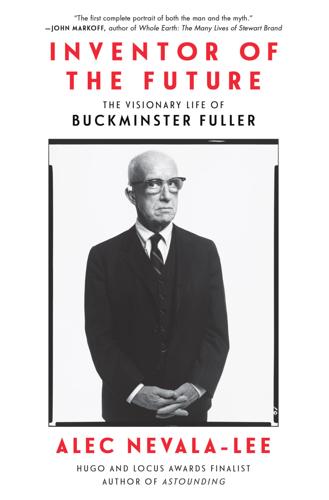
Inventor of the Future: The Visionary Life of Buckminster Fuller
by
Alec Nevala-Lee
Published 1 Aug 2022
San Francisco: Jossey-Bass, 1971. Cort, David. The Sin of Henry R. Luce: An Anatomy of Journalism. Secaucus, NJ: Lyle Stuart, 1974. Davenport, Guy, and Hugh Kenner. Questioning Minds: The Letters of Guy Davenport and Hugh Kenner. Edited by Edward M. Burns. Berkeley, CA: Counterpoint, 2018. Dawkins, Richard. Climbing Mount Improbable. New York: W. W. Norton, 1996. De Forest, Lee. Father of Radio: The Autobiography of Lee de Forest. Chicago: Wilcox & Follett, 1950. Dickenson, Donna. Margaret Fuller: Writing a Woman’s Life. London: Palgrave Macmillan, 1993. Dillard, Annie. Living by Fiction. New York: Harper Perennial, 1988.
…
: Russell Gold, The Boom: How Fracking Ignited the American Energy Revolution and Changed the World (New York: Simon & Schuster, 2014), 95. “the father of fracking”: Tom Fowler, “‘Father of Fracking’ Dies at 94,” Wall Street Journal, July 26, 2013. Richard Dawkins: “I was once privileged to hear [RBF], in his nineties [sic], lecturing for a mesmerizing three hours without respite” (Richard Dawkins, Climbing Mount Improbable [New York: W. W. Norton, 1996], 234). its basic “epiphany”: John P. Allen and Kathelin Gray interview with Hans Ulrich Obrist, https://www.synergeticpress.com/wp-content/uploads/2018/08/Mousse2017allenhoffmanulrich.pdf (accessed January 2021). “The idea that Bucky had”: Ibid. “They are visionaries”: Marc Cooper, “The Profits of Doom: The Biospherians Lure Scientists to a High-Price Feast Under Glass,” Phoenix New Times, June 19, 1991.

Emergence
by
Steven Johnson
The Ancient City: Life in Classical Athens and Rome. New York and Oxford: Oxford University Press, 1998. Corbusier, Le. Towards a New Architecture. New York: Dover Publications, 1986. Davis, Mike. City of Quartz: Excavating the Future in Los Angeles. New York: Vintage Books, 1992. Dawkins, Richard. Climbing Mount Improbable. New York and London: W. W. Norton, 1996. ———. The Extended Phenotype: The Long Reach of the Gene. New York and Oxford: Oxford University Press, 1982. ———. Unweaving the Rainbow: Science, Delusion and the Appetite for Wonder. London: Penguin Press, 1998. Dean, Katie. “Attention Kids: Play This Game.”

The Moral Landscape: How Science Can Determine Human Values
by
Sam Harris
Published 5 Oct 2010
Cambridge, MA: Harvard University Press. Davidson, D. (1987). Knowing one’s own mind. Proceedings and addresses of the American Philosophical Association, 61, 441–458. Dawkins, R. (1994). Burying the vehicle. Behavioural and Brain Sciences, 17 (4), 616–617. Dawkins, R. (1996). Climbing mount improbable. New York: Norton. Dawkins, R. (2006). The God delusion. New York: Houghton Mifflin. Dawkins, R. ([1976] 2006). The selfish gene. Oxford, UK: New York: Oxford University Press. Dawkins, R. (2010a, March 28). Ratzinger is the perfect pope. Washington Post: On Faith. Dawkins, R. (2010b, April 13).

Korea
by
Simon Winchester
Published 1 Jan 1988
Legends, not unnaturally, abound, and the island fills up for days beforehand as local shamans and other practitioners of the occult arrive to see the wondrous event. The hoteliers and the sellers of ojingoa make a good deal of money. There is a more sober reason for taking note of this otherwise unremarkable place. On a bluff above a pretty little bay is a memorial, a large cross mounted—improbable though it may sound—on the back of an enormous turtle that stands in the middle of a shallow pool. The day I was there the turtle’s gleaming white marble back was covered with thousands of red chillies, drying in the sun. But the farmer who placed them there would have meant no disrespect: every Korean I met along my route spoke adoringly of the man for whom the memorial was built—the man who was perhaps the country’s greatest wartime hero and whose most celebrated battle took place in the waters off Chindo.

Giving the Devil His Due: Reflections of a Scientific Humanist
by
Michael Shermer
Published 8 Apr 2020
“Bet you can’t tell me how the elbow joint of the lesser spotted weasel frog evolved by slow gradual degrees?” If the scientist fails to give an immediate and comprehensive answer, a default conclusion is drawn: “Right, then, the alternative theory, ‘intelligent design’, wins by default.” At least three of Richard’s books – The Blind Watchmaker, Climbing Mount Improbable, and River Out of Eden – are direct challenges to creationists’ arguments, although presented not as straight debunking works but as science-advancing treatises on evolutionary theory. And Richard’s latest book, The Ancestor’s Tale, is one long answer to creationists’ demand to “show me just one transitional fossil.”

The Beginning of Infinity: Explanations That Transform the World
by
David Deutsch
Published 30 Jun 2011
My daughter Juliet, then aged six…pointed out some flowers by the wayside. I asked her what she thought wildflowers were for. She gave a rather thoughtful answer. ‘Two things,’ she said. ‘To make the world pretty, and to help the bees make honey for us.’ I was touched by this and sorry I had to tell her that it wasn’t true. Richard Dawkins, Climbing Mount Improbable (1996) ‘Displace one note and there would be diminishment. Displace one phrase and the structure would fall.’ That is how Mozart’s music is described in Peter Shaffer’s 1979 play Amadeus. This is reminiscent of the remark by John Archibald Wheeler with which this book begins, speaking of a hoped-for unified theory of fundamental physics: ‘an idea so simple, so beautiful, that when we grasp it…how could it have been otherwise?’
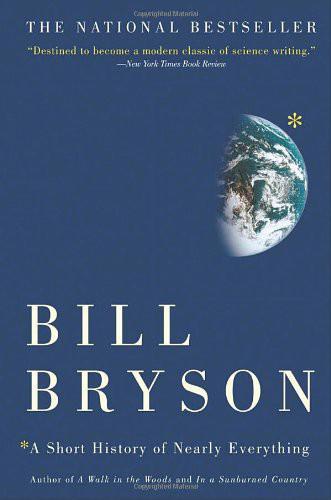
A Short History of Nearly Everything
by
Bill Bryson
Published 5 May 2003
New York: Random House/Gramercy Books, 1979. Davies, Paul. The Fifth Miracle: The Search for the Origin of Life. London: Penguin Books, 1999. Dawkins, Richard. The Blind Watchmaker. London: Penguin Books, 1988. ———. River Out of Eden: A Darwinian View of Life. London: Phoenix, 1996. ———. Climbing Mount Improbable. New York: W. W. Norton, 1996. Dean, Dennis R. James Hutton and the History of Geology. Ithaca: Cornell University Press, 1992. de Duve, Christian. A Guided Tour of the Living Cell. 2 vols. New York: Scientific American/Rockefeller University Press, 1984. Dennett, Daniel C. Darwin's Dangerous Idea: Evolution and the Meanings of Life.